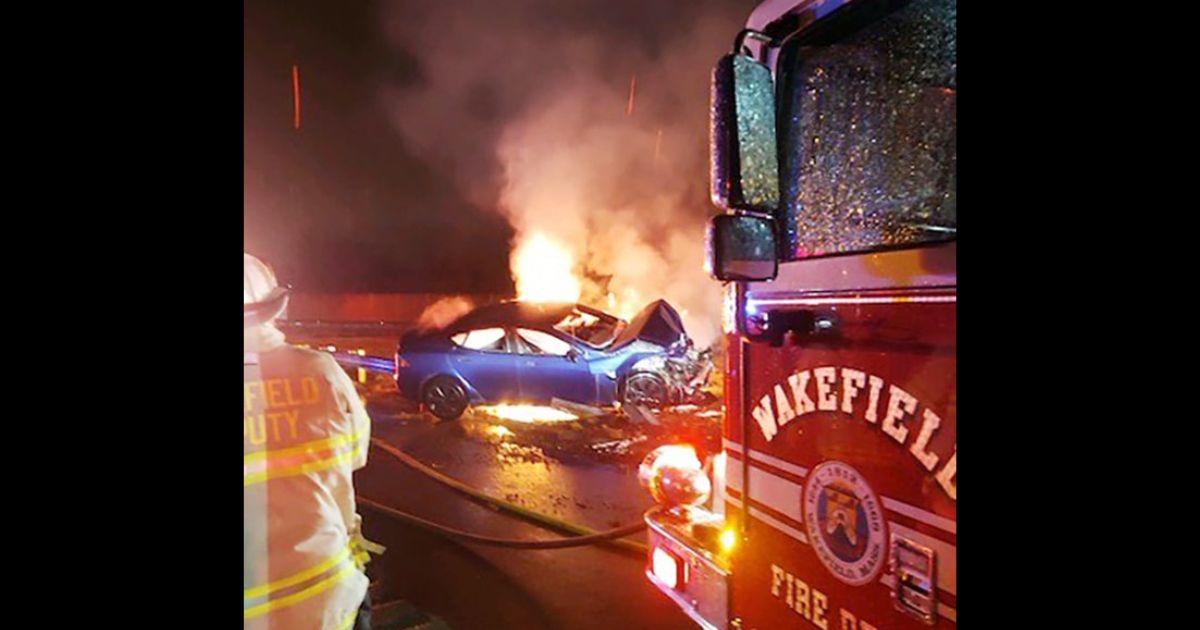The Wakefield Fire Department and Massachusetts State Police responded to a one-car accident on Interstate 95 in Wakefield on Thursday night.
When they arrived at the scene, they saw a Tesla “wedged onto the guardrail in the right breakdown lane,” according to a WFD news release.
The driver had been able to exit the vehicle and declined medical attention. But as workers tried to remove the car from the highway, “the guardrail pieced the undercarriage, causing the lithium-ion batteries to go into a thermal runaway,” the statement said.
The car burst into flames.
Engines from five nearby towns were called to assist. In the end, it took firefighters over two and a half hours and over 20,000 gallons of water to extinguish the blaze.
Simply put, an electric vehicle fire is difficult to put out. And this one was no different.
Once the fire was extinguished, a hazmat team was required to inspect the scene before what was left of the Tesla could be towed away. Firefighters were also required to notify the Department of Environmental Protection.
This is a growing concern for firefighters. When these electrical vehicles catch fire, they often require more resources and much more water than a typical vehicle fire. https://t.co/nwoK4fC4tV
— Lexington FF’s L1491 (@LexFire_L1491) January 20, 2023
EV fires are proving to be a challenge for firefighters.
Wakefield Fire Department Chief Thomas Purcell explained that when a gas-powered car catches fire, “we are going to knock that down with half a tank of water or a full tank in most cases,” WBZ-TV reported.
Purcell said the lithium-ion batteries underneath electric vehicles are the hazard.
“If those battery packs go into thermal runaway, which is just a chemical reaction, then they get super-heated and they run away. You can’t put them out. They don’t go out. They reignite. And they release tremendously toxic gases.” Flames can reach temperatures of 2,500 degrees, he said.
“Fighting vehicle fires is inherently dangerous. When responding to an electric or hybrid vehicle fire there are additional challenges responding crews must consider,” Purcell said in the WFD statement.
“Fire companies on the scene of an electrical vehicle fire should expect longer time frames to manage and control EV vehicle fires, ensure that large, continuous, sustainable water supply is established, as well as maintain heightened situational awareness and prepare for secondary fires.”
“As sales of electric and hybrid vehicles increase, the fire service is continuing to modify our tactics to properly respond, protect property and firefighters as well as control these types of fires,” Purcell said.
“The crews did a great job,” he added. “All responding mutual aid companies from the surrounding communities that assisted were fantastic and greatly helped the Wakefield Fire Department in controlling the incident.”
EVs underperform in cold weather. They take forever to charge. They are a headache on long-haul trips. This is just one more reason not to buy into the hype.
This article appeared originally on The Western Journal.

























 Continue with Google
Continue with Google